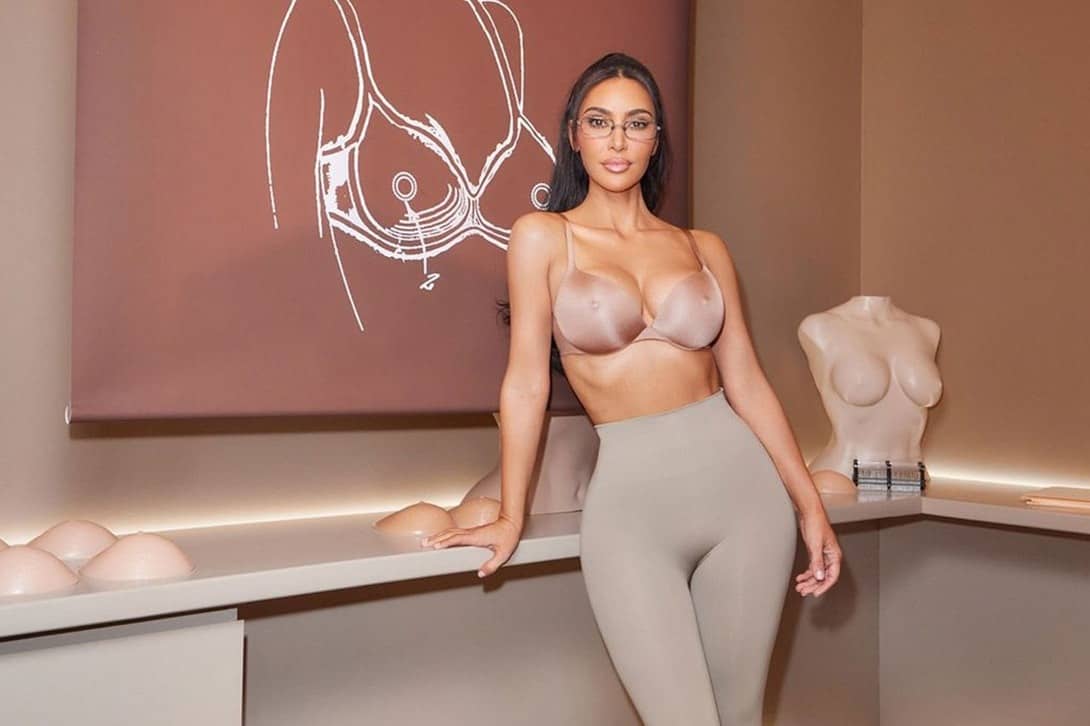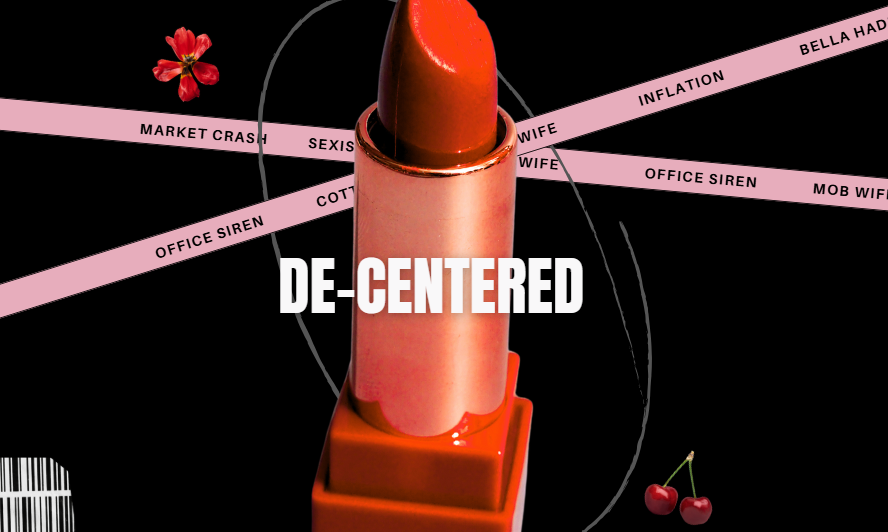It’s the summer of 2024 and Instagram is awash with pictures of celebrities dressed in, what they’re calling, the ‘office siren trend’. Bella Hadid is papped on the streets carrying a to-go cup and wearing a pencil skirt, stilettos, and an unbuttoned pinstriped shirt. Her hair is slicked back into a bun and she dons thin-rimmed glasses. What started as a TikTok trend was now out on the streets and on the runways. Cut to me, in a cubicle at work, dressed in what is called semi-formal, equal parts intrigued and confused. Some of these fits seemed amazing, oddly hot out on the street, but uncomfortable to wear to work. Was this supposed to take 9 to 5 fashion out on the street or bring street fashion into the workplace? I wanted to know where the origins of this very familiar trend lay.
Fashion is a never-ending cycle of repetition, reinterpretation and reiteration. The office siren trend can be traced back to the hacker films of the early 2000s that inspired the ‘geek chic’ trend to the ‘librariancore’ wear we see today. 2006 also saw the release of the fashion and cultural reckoning that was ‘Devil Wears Prada’ where Gisele Bundchen made a splash with her cameo as glasses-donning, power shoulder-wearing Serena.

The microtrend attempts to cast a unique and more sexy spin to the office attire of an average corporate 9 to 5 haver. Such was the grip of the style in mid-2024 that teens and new entrants to the workforce were making Pinterest boards on how to incorporate these pieces into their everyday workwear and frenzied arguments broke out on Reddit about whether this would get them pulled up by HR.
Microtrends today are a poor substitute for where original fashion trends would arise from - subcultures. The main difference is that subcultures had an ethos, distinct beliefs and actively challenged mainstream culture while microtrends cumulatively make up the mainstream culture. Subcultures gave rise to varied aesthetics while microtrends are slaves to the aesthetics themselves. The office siren, the mob wife, the clean girl, the coquette - none of these trends come from a particular ethos unless your tenets include overconsumption and contributing to a system that wants you to constantly feel inadequate and not ‘with the times’. Despite the very real critique of these trends, I’m willing to give the office siren a shot, even if it is to just be able to wear a corset to work.
Here is my understanding of what this specific microtrend that had me gripped by its flimsy jaw is -
The office siren never tires, the office siren works a normal 9 to 5, she dresses in Bayonetta glasses and a messy bun with a corseted shirt and a mini skirt with garters holding up her stockings, she thinks only with a pencil in her mouth and her hair, the office siren believes she is in charge.
With good reason, there is much to critique about the over-sexification of women in the workplace. It is almost ironic that capitalism tries to sell women cute fits for work, new takes on old trends that almost cosplay work attire, to keep us engaged in a workforce that we once had to fight to be a part of and now get grossly underpaid in. Who is the office trend really for, I questioned, while scrolling through the plethora of images under its tag. Was the wearer finding power in her sexuality or was it for the male gaze and how it believes women are only play-acting at their ‘big girl’ jobs? Maybe being talked over in meetings, ideas being stolen, promotions being attributed to your looks and being mansplained in your areas of expertise all felt like tiny jabs if you just got to wear a tie and blazer without a shirt to work.
It is also extremely interesting to note that this comes at a time when more women are choosing to quit the everyday workforce to have more freedom of their time. This work culture, boosted by the pandemic years, is detrimental to the capitalistic machinery in many ways including but not limited to fewer ways of exploitation of human resources. While this may sound like a leap of the imagination it remains a very prevalent theory in mind, the ‘office siren’ trend seems to be a way of incentivising women to want to come to work and do more than they are asked.
Again, I understand that this may seem far-fetched, but I want you to stop looking at fashion as a silo in the cultural context and begin to look at the economy and politics among others as having a symbiotic relationship with fashion. Remember, day-to-night fashion? Some of us, including me, continue to be suckers for it. The trend encouraged people to wear clothes to work that could easily transition from the office to an outfit appropriate for an evening out with friends. One of the first mentions of it that can be found on the internet is in Vogue magazine in 1988. The year followed a giant stock market crash in 1987 and a 3 year inflation from 1980-1983. It signalled an economic boom with higher employment rates but, unsurprisingly, the same minimum wage rate as the early 1980s. The ‘day-to-night’ trend laid emphasis on sustainable, versatile clothing that transformed easily from office wench to party siren. Could this be due to the new workforce entrants, more time spent doing labour and unreasonably little disposable income?
Another example that proves my point, and I do love proving points, is the High Heel Index. The theory suggests that when the economy suffers a blow, the height of preferred heels increases as a means of escaping reality. If the period of recession endures, the heel heights go down and even economic booms see shorter heels being preferred.
While some say this might just be a trend-based shift and has nothing to do with the economy, the truth is that nothing in this world works as separates. Fashion, social norms, economy, and politics all work together to inform the masses of what should be ‘popular’ and we eat it up. Microtrends behave in indirect response to economic conditions and the ‘office siren’, at least in part, is evidence of that. Not only does it fuel capitalist consumerism, but it also seeds the romanticisation of the workplace sex kitten - infantilising and sexualising an indispensable part of the workforce a.k.a. women.

Yes, this may all be the ravings of a mad woman who loves fashion and conspiracy theories but I think there is something to be said for looking at all consumption through a critical lens and understanding our consumerist behaviour, especially when it comes to the media trying to return you to corporate slavery while also making you perform for your male coworkers. After all, media and art are not only indicative of the times but deeply influenced by them, making it impossible to view them insularly. I sit at my desk today, having been asked in several workplaces to not show skin or ‘overdress’ while also having heard ‘Kaavya, you’re a pretty girl, why don’t you dress like it’ from one of my bosses. It’s almost funny how in this tug of war between corporate virgin and corporate whore, the only loser constantly failing at achieving the fictional balance is me. One thing I know for certain - however much it tries, Kim Kardashian’s ‘nipple bras’ (hilariously designed to create the illusion of cold hard nipples poking out through your shirt even when you aren’t freezing) will not make me like my own subjugation and sexualization.
Support the author :
We're an independent magazine that is finding its footing and here's how you can help- Shatter the illusion of capitalism with one contribution at a time and consider supporting this writer who made you laugh/cry directly : kaavya.anomaly@okicici



Comments